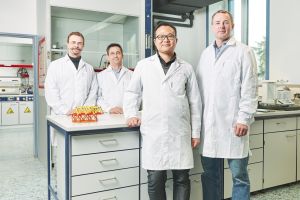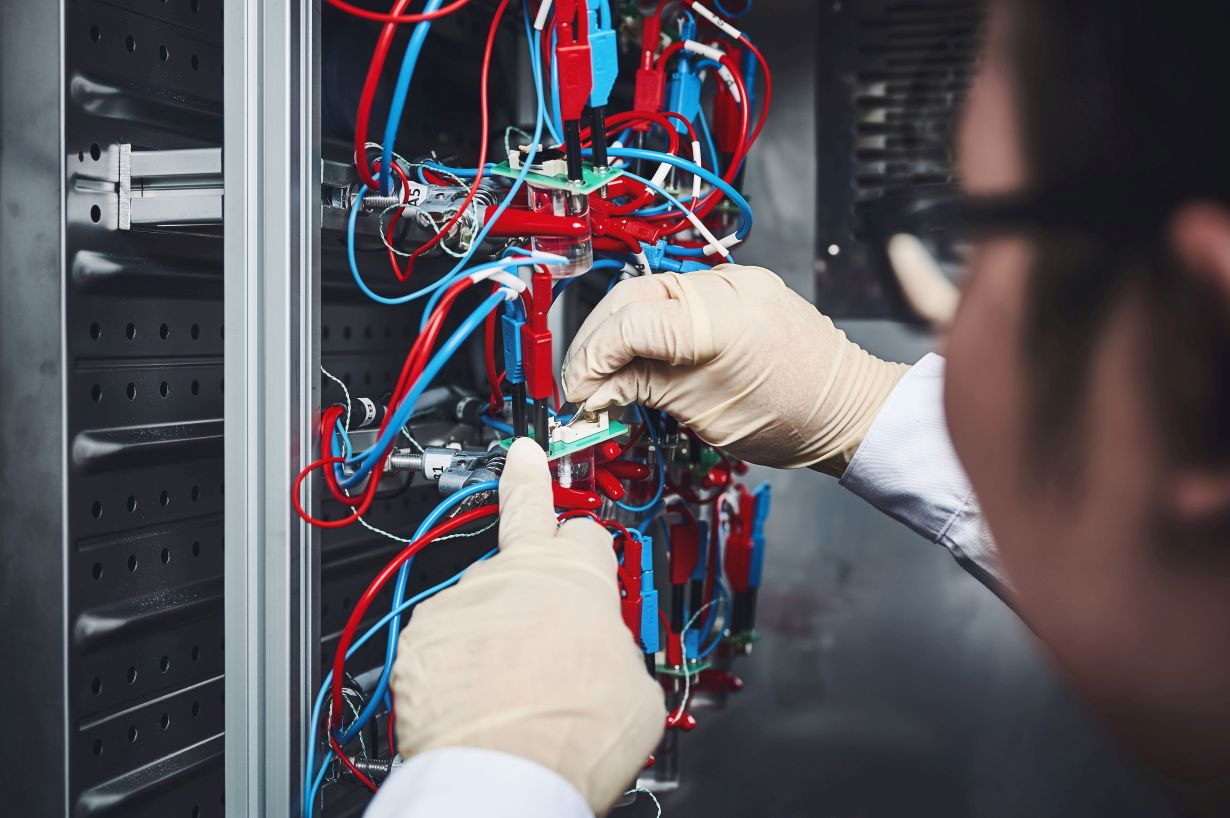Researchers of Karlsruhe Institute of Technology (KIT) and cooperating institutions studied structural changes during the synthesis of cathode materials for future high-energy lithium-ion batteries and obtained new major findings about degradation mechanisms. These findings might contribute to the development of batteries of far higher capacity, which would then increase the range of electric vehicles. The results are reported in Nature Communications (DOI 10.1038/s41467-019-13240-z).
So far, breakthrough of electric mobility has been impeded by insufficient vehicle ranges, among others. Lithium-ion batteries of increased charge capacity might help. “We are in the process of developing such high-energy systems,” says Professor Helmut Ehrenberg, Head of the Institute for Applied Materials – Energy Storage Systems (IAM-ESS). “Based on fundamental understanding of electrochemical processes in batteries and by the innovative use of new materials, storage capacity of lithium-ion batteries may be increased by up to 30% in our opinion.” At KIT, this research is conducted at the Center for Electrochemical Energy Storage Ulm & Karlsruhe (CELEST), the biggest German research platform for electrochemical energy storage. Ehrenberg is Deputy Spokesperson of CELEST.

High-energy lithium-ion technology differs from the conventional technology by a specific cathode material. Instead of layered oxides with varying ratios of nickel, manganese, and cobalt that have been used so far, manganese-rich materials with lithium excess are applied, which considerably enhance the energy storage capacity per volume/mass of cathode material. However, use of these materials has been associated with a problem so far. During the insertion and extraction of lithium ions, i.e. basic functioning of a battery, the high-energy cathode material degrades. After a certain time, the layered oxide transforms into a crystal structure with highly unfavorable electrochemical properties. As an undesired consequence, the average charge and discharge voltage decreases from the very beginning of the process, which has prevented the development of suitable high-energy lithium-ion batteries so far.
New Findings about Degradation
The exact degradation mechanism was far from being understood completely. A team of researchers of KIT and cooperating institutions has now described the basic mechanism in Nature Communications: “Based on detailed studies of the high-energy cathode material, we found that degradation does not take place directly, but indirectly via the formation of a so far hardly noticed lithium-containing rock-salt structure,” says Weibo Hua (IAM-ESS), one of the main authors of the study. “In addition, oxygen plays an important role in the reactions.” Apart from these results, the study also reveals that new findings about the behavior of a battery technology do not necessarily have to result directly from the degradation process. Weibo and the other scientists involved made their discovery in studies carried out while synthesizing the cathode material.
These findings of KIT mark an important milestone on the way towards high-energy lithium-ion batteries for electric cars. They enable tests of new approaches to minimizing degradation in layered oxides and starting the development proper of this new battery type.
Original Publication:
Weibo Hua, Suning Wang, Michael Knapp, Steven J. Leake, Anatoliy Senyshyn, Carsten Richter, Murat Yavuz, Joachim R. Binder, Clare P. Grey, Helmut Ehrenberg, Sylvio Indris, and Björn Schwarz: Structural insights into the formation and voltage degradation of high-energy lithium- and manganese-rich layered oxides. Nature Communications, 2019. DOI 10.1038/s41467-019-13240-z
https://www.nature.com/articles/s41467-019-13240-z#citeas
About the CELEST Research Platform with the POLiS Cluster of
Excellence
The CELEST (Center for Electrochemical Energy Storage Ulm & Karlsruhe) research platform for strategic collaboration was established in 2018 by KIT, Ulm University, and the Center for Solar Energy and Hydrogen Research Baden-Württemberg (ZSW). It is one of the biggest battery research activities in international comparison. 45 working groups from 29 institutes of KIT, Ulm University, and ZSW contribute their complementary expertise to CELEST – from fundamental research to close-to-practice development to technology transfer. CELEST focuses on three research fields: Lithium-ion technology, energy storage beyond lithium, and alternative technologies for electrochemical energy storage and conversion.
The POLiS (Post Lithium Storage) Cluster of Excellence also is embedded in CELEST. Within POLiS, researchers from Karlsruhe and ULM conduct research relating to the future battery. In late 2018, the Cluster was acquired within the highly competitive Excellence Strategy Competition of the federation and the federal states. It has a budget of about EUR 7 million per year and is scheduled for a duration of initially seven years. POLiS partners are KIT and Ulm University, associated partners are ZSW and Gießen University. Half of the about 100 researchers are working in Karlsruhe, half in Ulm.
More about CELEST: https://www.celest.de/
More on the Cluster of Excellence: https://www.postlithiumstorage.org/
More about the KIT Energy Center: http://www.energie.kit.edu
In close partnership with society, KIT develops solutions for urgent challenges – from climate change, energy transition and sustainable use of natural resources to artificial intelligence, sovereignty and an aging population. As The University in the Helmholtz Association, KIT unites scientific excellence from insight to application-driven research under one roof – and is thus in a unique position to drive this transformation. As a University of Excellence, KIT offers its more than 10,000 employees and 22,800 students outstanding opportunities to shape a sustainable and resilient future. KIT – Science for Impact.

